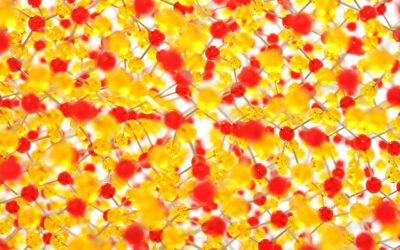Imagine a computer that processes information like the human brain. That’s the goal of neuromorphic computing, a computer engineering approach that involves emulating components of the human brain and nervous system.
By modeling computer systems after the human brain, researchers hope to create machines that can learn and adapt more efficiently than ever before. One key aspect of this research is the development of artificial synapses, which are devices that can imitate the way that neurons in the brain communicate with one another.
A bright idea
In a recent study published in Advanced Optical Materials, researchers have explored the use of a device called an all-optical-controlled phototransistor to emulate synaptic functions of the human brain. In our brains, synapses are connections between neurons that allow information to flow between them.
Excitatory synapses encourage neurons to “fire” and send a signal, while inhibitory synapses suppress them. The ability of neurons to communicate in this way is essential for all aspects of brain function, from perception and memory to decision-making and motor control.
In recent years, researchers have been working to create artificial synapses that can mimic this process, with the hope of creating more efficient and intelligent machines. One approach to this problem is to use nanoscale devices, such as transistors, that can emulate the behavior of biological synapses.
These devices can be programmed to produce different types of responses depending on the input signal, much like a biological synapse.In the current study, the researchers from the National Cheng Kung University in Taiwan explored the use of a new type of device called an all-optical-controlled IGZO/ZrOx phototransistor to emulate synaptic functions.
This device is made up of a thin film of indium-gallium-zinc oxide (IGZO) that is coated with a layer of zirconium oxide (ZrOx). When exposed to different types of light, the device can produce either a positive or negative “photoresponse”.
The researchers were able to control the device using different wavelengths of light, which allowed them to simulate both positive and negative responses, like in the excitatory and inhibitory synapses in our brains.
Traditional neuromorphic computing relies on electronic circuits, which can be complex and difficult to scale up. The use of light signals instead could provide a simpler and more efficient alternative.
“When using light as the modulating signals, the signal transmission and processing will be faster than electrical signals, which will have applications in high-speed computation. Secondly, the artificial synapses can be controlled remotely with light. This will be beneficial for wireless operation,” wrote Jen-Sue Chen, one of the authors of the paper, in an email.
Paving the way for advanced neuromorphic computers
This technology has potential applications in a variety of fields, including artificial intelligence, medical devices, and more. For example, it could be used to create more efficient and intelligent sensors or to develop new types of prosthetic devices that can communicate with the nervous system.
In addition to serving as an artificial synapse in neuromorphic computing, this phototransistor device is also capable of acting as a sensor that detects Ultraviolet (UV) and Infrared (IR) light, which is crucial in different types of medical devices.
For instance, UV light is commonly used in phototherapy to alleviate symptoms of skin conditions. However, to ensure that the application of UV light is safe, it is crucial to monitor the light intensity using specialized UV sensors. In wearable electronics, infrared (IR) sensing is increasingly essential for tasks such as temperature monitoring, blood flow measurement, and tissue oxygenation monitoring.
“Our proposed phototransistor can integrate both UV and IR sensors in a single device. This will not only simplify the fabrication, save the cost but also increase the functionality of advanced optoelectronic devices,” said Chen.
Reference: Jen-Sue Chen, et al., All-Optical-Controlled Excitatory and Inhibitory Synaptic Signaling through Bipolar Photoresponse of an Oxide-Based Phototransistor, Advanced Optical Materials (2023). DOI: 10.1002/adom.202300089
Feature image credit: Victor Aznabaev on Unsplash

















